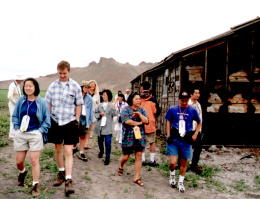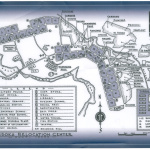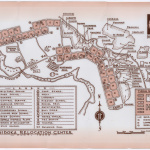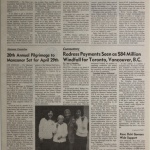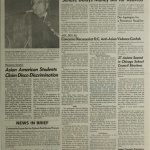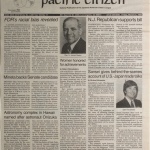Camp pilgrimages
Organized visits back to former World War II concentration camps sites that were started largely by Sansei in the late 1960s but have evolved to include participation from all communities confronting civil rights violations. The first organized pilgrimages occurred in Southern and Northern California in 1969 with trips to Manzanar and Tule Lake , both of which included an inter-generational mix of Issei , Nisei , Sansei and Yonsei . Since the 1970s, there have also been sporadic pilgrimages to other War Relocation Authority camp sites, assembly centers and Department of Justice camps. More Japanese Americans and the general public started participating in pilgrimages after the passage of the Civil Liberties Act of 1988 .
The early pilgrimages represented one manifestation of a growing interest in the wartime incarceration by members of the Japanese American community at this time, in particular members of the Sansei generation. Most Sansei grew up knowing little about the World War II experiences of their parents or grandparents, but had come of age during the social movements of the 1960s, which inspired them to explore their own ethnic identity and history. Some joined the 1968 student strike at San Francisco State University, encouraging other Asian American students on other campuses to fight for academic courses that included the history of minorities and women. Along with new museum exhibits, television programs, and documentary films , a visit or pilgrimage back to the former camp sites became one venue to educate the public, as well as to give former camp inmates an opportunity to share their experiences.
Manzanar
Sentoku Maeda and Shoichi Wakahiro had been making personal pilgrimages to Manzanar to pray for the dead since the end of the war, but the first organized Manzanar pilgrimage took place in December 1969 coordinated by the Organization of Southland Asian American Organizations (OSAAO), an umbrella group. Participants restored and cleaned up the Manzanar cemetery, allowing former camp inmates in attendance to pay their respects. The event attracted news reporters, including Tritia Toyota, who was just starting in the newscasting business. Community activists also used this pilgrimage as an opportunity to campaign for the repeal of Title II of the Internal Security Act of 1950 .
The inaugural Manzanar pilgrimage was a success, and the OSAAO's Manzanar Project Committee evolved into the Manzanar Committee , with Nisei and former Manzanar inmate Sue Kunitomi Embrey and Yonsei Warren Furutani as co-chairs. Embrey would go on to chair the Manzanar Committee and help institutionalize an annual pilgrimage, which still continues after she died in 2006. The Manzanar Committee members also played an active role in the redress movement, while at the same time successfully getting the camp site designated as a California State Historic Landmark in 1972; as a National Historic Landmark in 1985; and as a National Historic Site in 1992, turning the area into a national park.
An organized pilgrimage to Manzanar still continues annually and is always held on the last weekend of April. It is now overseen by the National Park Service, although the program portion is maintained by the Manzanar Committee. The demographics of the pilgrimage attendees have changed over the years. The presence of former camp inmates continue to dwindle as they pass away, but they are being replaced by a younger group of people from different ethnic and religious backgrounds. There was a spike of Muslim American attendees shortly after the Sept. 11, 2001, terrorist attack, and with the establishment of such programs as Fred Korematsu Day, the experiences of the World War II camps continues to attract those interested in constitutional and civil rights.
Tule Lake
Parallel activities took place in Northern California in 1969 with a pilgrimage to Tule Lake, organized by Asian American Concern, a student group from the University of California, Davis. Unlike Southern California, however, early pilgrimages to Tule Lake did not occur on a regular basis. Part of the reason may be because the Tule Lake campsite was not located relatively near a large Japanese American community as was Manzanar. The second Tule Lake pilgrimage took place in 1974, coordinated by the Northern California/Western Nevada District of the Japanese American Citizens League (JACL). The 1975 pilgrimage was organized by the Asian Student Union, followed by a 1976 pilgrimage, sponsored by the Japanese Christian Church Federation of Northern California.
In 1978, the Tule Lake Committee was formed through a coalition of the Committee Against Nihonmachi Eviction of San Francisco, the Northern California Region of the Asian Pacific Student Union, and dedicated individuals. The Tule Lake Committee along with the NCWN District of the JACL successfully pushed to have the Tule Lake site designated as a California State Historical Landmark in 1979.
Early Tule Lake pilgrimages required attendees to bring their own sleeping bags. They slept on the local county fair grounds and cooked their own meals since they were unsure of how local residents would receive them. During the night, students also patrolled the fair grounds with flashlights to make sure everyone was safe. However, as more Nisei and some Issei started to participate, organizers found hotel accommodations for the older attendees in Klamath Falls, Oregon.
The Tule Lake Committee organized pilgrimages in 1978, 1979 and 1980. However, pilgrimages during the 1980s became infrequent when pilgrimage organizers, largely made up of students, focused their energy on the redress movement. In 1992, the Tule Lake Committee started to organize a pilgrimage every other year on a regular basis and utilized the dormitories at the Oregon Institute of Technology to accommodate the attendees.
Pilgrimages to Other Camps
The first formal pilgrimage to the Granada (Amache) WRA camp site occurred in 1976, modeled after the Manzanar pilgrimage. The event was organized by the Asian American Community Action Research Program and students from Colorado University. Colorado University Professor Russell Endo received a grant from the Colorado Bi-Centennial Commission to fund the 1976 Granada pilgrimage, where participants cleaned the cemetery site, held a memorial and shared a potluck lunch in the front yard of the Masunaga family, who lived in the nearby town of Granada.
A regular annual pilgrimage to Granada started in 1983 after the Denver Central Optimist Club became involved. The Optimist Club, which later evolved into the Amache Club, worked together with Granada High School teacher John Hopper and his students to organize the annual event held in May. On Feb. 10, 2006, Granada received National Historic Landmark status, and today, the annual pilgrimage is organized by Friends of Amache, an umbrella group that includes the Amache Club, the Amache Preservation Society and the Amache Historical Society.
An annual pilgrimage to the Minidoka WRA camp site started in 2001, after the former camp received national monument status. In 2005, a yearly Civil Liberties Symposium was implemented, and the Minidoka pilgrimage became a multi-day event, modeled after the four-day Tule Lake pilgrimage. In May 2008, Minidoka and the Bainbridge Island memorial site received National Historic Site status.
The Heart Mountain WRA camp received National Historic Landmark status in 2006, but an annual pilgrimage did not start happening until August 2011 when Heart Mountain celebrated the grand opening of an Interpretive Learning Center (ILC). While the Heart Mountain ILC is the second camp museum to open, following Manzanar's Interpretive Center, unlike Manzanar, Heart Mountain's ILC was privately funded.
There have been also sporadic pilgrimages to other camp sites. Some of them include the following:
- Since the 1990s, George "Horse" Yoshinaga, a columnist for the Rafu Shimpo newspaper, has organized several pilgrimages to the former Santa Anita Assembly Center , which is still run as a horse racing track with horse stables from the 1940s that had once imprisoned Japanese Americans. Yoshinaga also successfully pushed to have a memorial plaque installed on the grounds in 2001.
- Periodic pilgrimages to the Poston (Colorado River) WRA camp have occurred whenever former inmate reunions were held in Laughlin, Nevada.
- Two pilgrimage type programs were held at the former Fort Lincoln Department of Justice camp in Bismarck, N.D. The site is currently the United Tribes Technical College, which still utilizes many of the buildings that had once imprisoned German and Japanese Americans during the war. Both the 2007 and 2010 event attracted former German and Japanese American inmates and their families, and the tribes held a "Wiping of the Tears" ceremony to help heal past wounds.
The ritual of journeying to the various camp sites has allowed former camp inmates to share long-repressed memories, which in turn allowed younger Japanese Americans to reclaim a part of their history. During the 1980s, this helped galvanize the Nikkei community to fight successfully for redress and started a national movement to preserve the former camp sites.
The annual camp pilgrimages have also nurtured political awareness, encouraging participants to make connections with other communities that have or are undergoing similar civil rights violations. After the Sept. 11, 2001 Al-Qaeda attack on the Twin Towers and the Pentagon, pilgrimage organizers recognized similar issues that people of Middle Eastern descent were facing such as racial profiling, hate crimes and indefinite detention without charge that Japanese Americans had confronted shortly after Japan attacked Pearl Harbor. Since then, Imams, Sikhs, and people of Middle Eastern descent have been invited to participate in pilgrimage programs and memorial services.
For More Information
Bahr, Diana Meyers. The Unquiet Nisei: An Oral History of the Life of Sue Kunitomi Embrey . New York: Palgrave Macmillan, 2007.
Iwamura, Jane Naomi. "Critical Faith: Japanese Americans and the Birth of a New Civil Religion." American Quarterly 59.3 (September 2007): 937–68.
Nakamura, Lisa M. "Seeking Meanings from the Past: Examining the Psychological Effects of the Tule Lake Pilgrimage on Japanese American Former Internees and Their Descendents." Psy.D. dissertation, The Wright Institute, 2009.
Takita, Sachiko. "The Tule Lake Pilgrimage and Japanese American Internment: Collective Memory, Solidarity, and Division in an Ethnic Community." Ph.D. dissertation, UCLA, 2007.
Tule Lake Committee. Kinenhi: Reflections on Tule Lake . San Francisco: Tule Lake Committee, 1980.
Last updated Dec. 13, 2023, 6:18 p.m..

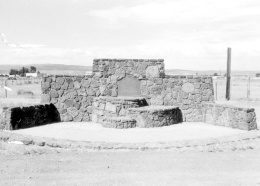 Media
Media
